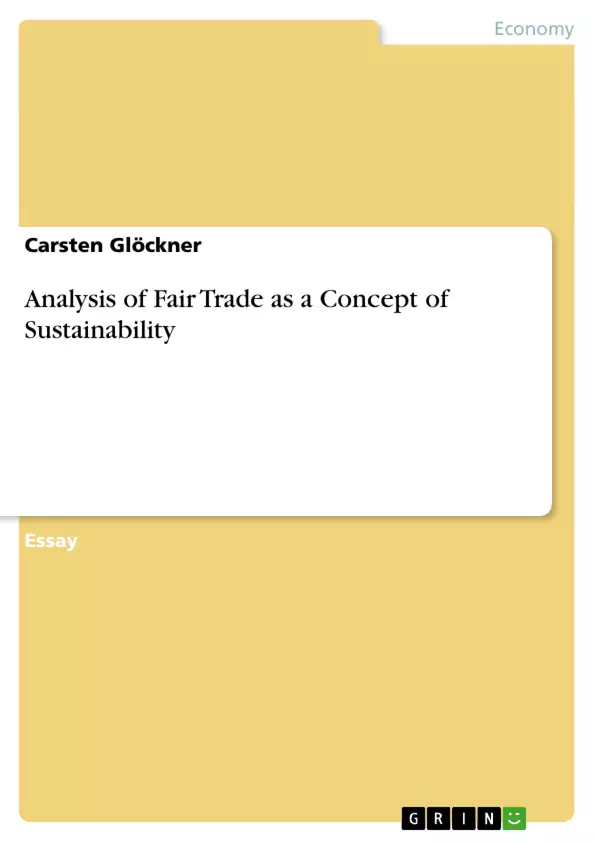In this essay I want to discuss the issue of Fair Trade and how Fair Trade can contribute to social justice. First I will give a short definition what Fair Trade actually is and then I will give an overview about the different Fair Trade organisations and define the standards which they follow. Then I will have a look at the producers and also the products which are available. I will analyse their sales statistic and also their market share.
Fairtrade is a “trading partnership” which tries to maintain “respect, dialogue, transparency, and increased more fairness in international trade” . Fair Trade tries to better the situation of developing countries by paying a “fair” price for certain products that is higher than the market price. In the last few years, Fairtrade has becoming more and more popular in the industrialized world. The supporter’s base is often also engaged in debates with political decision-makers in the European institutions for the purpose of making international trade fairer. Fair Trade is definitely a form of ethical consumption, because as consumption is one aspect of human behaviour that could harm other human beings.
Inhaltsverzeichnis (Table of Contents)
- Introduction
- Definition of Fair Trade
- Fairtrade organisations and standards
- Labelling
- Producers
- Products and Sales Channels
- Sales and image campaigns
- Discussion and critics
- Excursion: Global free trade
- Conclusion
Zielsetzung und Themenschwerpunkte (Objectives and Key Themes)
The essay aims to analyze the concept of Fair Trade and its contribution to social justice. It examines Fair Trade principles, organizations, standards, and products, exploring both the benefits and criticisms associated with this approach to international trade.
- Definition and principles of Fair Trade
- Fair Trade organizations and standards
- Role of producers, products, and sales channels in Fair Trade
- Comparison of Fair Trade to global free trade
- Potential for Fair Trade expansion in the future
Zusammenfassung der Kapitel (Chapter Summaries)
The introduction sets the context by highlighting the situation of developing countries and the need for ethical consumption. It defines Fair Trade as a trading partnership focused on equity, transparency, and respect, aiming to improve the lives of marginalized producers. The essay further delves into Fair Trade organizations such as IFAT and FLO International, outlining their standards and certification processes.
The chapter on "Definition of Fair Trade" provides an in-depth analysis of Fair Trade principles, emphasizing its role in sustainable development and its commitment to fairer trading conditions. It discusses the importance of stakeholder engagement in shaping Fair Trade standards, including producers, traders, experts, and inspectors.
The essay proceeds to explore the specific products and sales channels involved in Fair Trade. It discusses the role of producers, importers, and retailers in the Fair Trade market, highlighting the various product categories and their distribution channels.
The chapter on "Discussion and critics" addresses the potential drawbacks of Fair Trade, including price distortion, limited product diversification, and the potential for image campaigns to overshadow genuine social impact. It examines the complex relationship between Fair Trade and global free trade.
Schlüsselwörter (Keywords)
Key terms and concepts explored in the essay include Fair Trade, ethical consumption, sustainable development, international trade, social justice, producer empowerment, transparency, standards, certification, and global free trade.
- Citar trabajo
- Carsten Glöckner (Autor), 2009, Analysis of Fair Trade as a Concept of Sustainability, Múnich, GRIN Verlag, https://www.grin.com/document/130047



